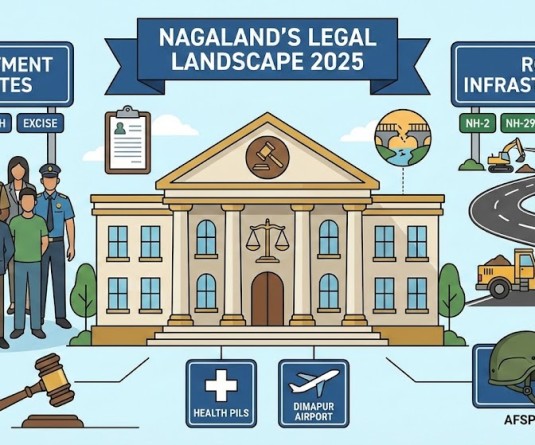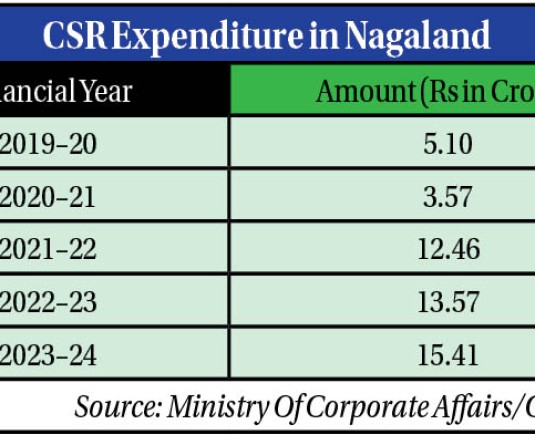The Global Youth Tobacco Survey-4 carried out in Nagaland among 1,919 students (13 to 15 years of age) in 2019 showed that 35% of students use smokeless tobacco. (Morung Photo | For Representational Purpose)
.jpg)
Limasenla Jamir
Mokokchung | May 30
The 31st of May is World No Tobacco Day, an annual awareness day. It was founded in 1987 by World Health Organization (WHO) member states to raise public awareness about the effects that tobacco products do to people, public health, communities, and the environment.
According to WHO, the tobacco epidemic kills up to half of its users and contributes to more than eight million people dying every year. The Global Youth Tobacco Survey-4 carried out in Nagaland among 1,919 students (13 to 15 years of age) in 2019 showed that 35% of students use smokeless tobacco.
Dr Chiekroshuyi Tetseo, Additional Director & State Programme Officer (SPO), National Tobacco Control Programme (NTCP), Department of Health and Family Welfare (DoHFW), in an interview with The Morung Express, stated that the use of smokeless tobacco among the youth in Nagaland is on the rise, which is concerning.
Nukshiwati Longchar, District Consultant, NTCP, DoHFW, Mokokchung stated that as per the interaction with school authorities during inspections and awareness activities by the District Tobacco Control Cell, Mokokchung, there is a high usage of smokeless tobacco products by the students mainly because they have easy access to tobacco products.
“There is a huge demand for smokeless tobacco around educational institutions because students prefer more of smokeless tobacco as it creates less stain in the mouth compared to other products like paan and it is cheaper and easier for them to not get caught by authorities,” he stated.
Longkumer, a post-graduate student, said he was influenced by his elders and began chewing tobacco when he was in class six and has been addicted to various types of tobacco from high school until graduation, the most recent addiction being Shikhar, a type of gutka that is mixed with tobacco and eaten very popularly among Nagaland's youth.
Imchen, a graduating college student narrates how he started chewing gutka at the age of 14 due to the influence from everyone around him including his family members. “Eating gutka has become a habit for me that now, if I don’t have it for a long time or for a prolonged period, I become restless,” he said.
“I have tried to quit chewing tobacco but it is possible only when you have the will power and if you're in the right environment. For someone who has been a consumer of tobacco for a long time, the taste and smell of tobacco is difficult to forget. If someone who is also a consumer happens to eat nearby you, it's very tempting,” he added.
According to Dr Funit Longchar, a dentist based in Mokokchung, one out of every 10 patients have tobacco-related problem. Pre-cancerous lesions induced by tobacco, he claims, are one of the most common and dangerous problems.
“It generally takes 10 years or more for the lesions to develop, but I've seen it in 16- 17-year-olds, indicating that the lesions are developing faster these days due to the early use of tobacco. Oral cancer will develop if the lesion grows and the person continues to smoke,” he stated.
“Many individuals over the age of 30 have third and fourth stage lesions, which are primarily caused by tobacco use. The issue is that small lesions do not cause much discomfort to the individual, but when they grow into full-grown cancerous lesions, they become extremely threatening,” he continued.
“It is difficult to regulate/check the usage of smokeless tobacco. The administration conducts surprise checking every once a while and also take proper action whenever it is observed, but all these measures are not enough,” said Obed H Kinny, Vice Principal, City College of Arts & Commerce, Dimapur.
“Some students have used masks to conceal the fact that they are chewing paan masala and other tobacco items. The administration can try to limit the use of smokeless tobacco on campus, but this is unlikely to be successful in the long run. The better long-term and sustainable approach is to ban the products statewide,” he remarked.
“To mitigate the problem of smokeless tobacco use, we have to co-ordinate with all the stake holders for which we have coordinated with the school education and police department,” said Dr Chiekroshuyi Tetseo. “We have developed an Android app called Tobacco Free Nagaland which will be used for awareness programme all over the state and we will try to implement tobacco free educational institution all over the state,” he added.
Nukshiwati also suggested that Cigarettes and other Tobacco Products Act 2003 should be reviewed and a much stringent Act should be passed to penalize defaulters. “A child is exposed to tobacco products at early stage in our society so there should be restriction to easy access of minors and students. Parents sending minors to buy tobacco products at shops or sales man easily handing tobacco products to minors has to be changed by advocacy through Church platforms and social gatherings,” he further suggested.






